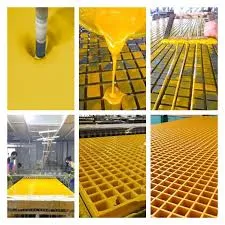
-
 Afrikaans
Afrikaans -
 Albanian
Albanian -
 Amharic
Amharic -
 Arabic
Arabic -
 Armenian
Armenian -
 Azerbaijani
Azerbaijani -
 Basque
Basque -
 Belarusian
Belarusian -
 Bengali
Bengali -
 Bosnian
Bosnian -
 Bulgarian
Bulgarian -
 Catalan
Catalan -
 Cebuano
Cebuano -
 China
China -
 China (Taiwan)
China (Taiwan) -
 Corsican
Corsican -
 Croatian
Croatian -
 Czech
Czech -
 Danish
Danish -
 Dutch
Dutch -
 English
English -
 Esperanto
Esperanto -
 Estonian
Estonian -
 Finnish
Finnish -
 French
French -
 Frisian
Frisian -
 Galician
Galician -
 Georgian
Georgian -
 German
German -
 Greek
Greek -
 Gujarati
Gujarati -
 Haitian Creole
Haitian Creole -
 hausa
hausa -
 hawaiian
hawaiian -
 Hebrew
Hebrew -
 Hindi
Hindi -
 Miao
Miao -
 Hungarian
Hungarian -
 Icelandic
Icelandic -
 igbo
igbo -
 Indonesian
Indonesian -
 irish
irish -
 Italian
Italian -
 Japanese
Japanese -
 Javanese
Javanese -
 Kannada
Kannada -
 kazakh
kazakh -
 Khmer
Khmer -
 Rwandese
Rwandese -
 Korean
Korean -
 Kurdish
Kurdish -
 Kyrgyz
Kyrgyz -
 Lao
Lao -
 Latin
Latin -
 Latvian
Latvian -
 Lithuanian
Lithuanian -
 Luxembourgish
Luxembourgish -
 Macedonian
Macedonian -
 Malgashi
Malgashi -
 Malay
Malay -
 Malayalam
Malayalam -
 Maltese
Maltese -
 Maori
Maori -
 Marathi
Marathi -
 Mongolian
Mongolian -
 Myanmar
Myanmar -
 Nepali
Nepali -
 Norwegian
Norwegian -
 Norwegian
Norwegian -
 Occitan
Occitan -
 Pashto
Pashto -
 Persian
Persian -
 Polish
Polish -
 Portuguese
Portuguese -
 Punjabi
Punjabi -
 Romanian
Romanian -
 Russian
Russian -
 Samoan
Samoan -
 Scottish Gaelic
Scottish Gaelic -
 Serbian
Serbian -
 Sesotho
Sesotho -
 Shona
Shona -
 Sindhi
Sindhi -
 Sinhala
Sinhala -
 Slovak
Slovak -
 Slovenian
Slovenian -
 Somali
Somali -
 Spanish
Spanish -
 Sundanese
Sundanese -
 Swahili
Swahili -
 Swedish
Swedish -
 Tagalog
Tagalog -
 Tajik
Tajik -
 Tamil
Tamil -
 Tatar
Tatar -
 Telugu
Telugu -
 Thai
Thai -
 Turkish
Turkish -
 Turkmen
Turkmen -
 Ukrainian
Ukrainian -
 Urdu
Urdu -
 Uighur
Uighur -
 Uzbek
Uzbek -
 Vietnamese
Vietnamese -
 Welsh
Welsh -
 Bantu
Bantu -
 Yiddish
Yiddish -
 Yoruba
Yoruba -
 Zulu
Zulu
Exploring the Benefits and Innovations of FRP in Modern Vehicle Design
The FRP Car Revolutionizing the Automotive Industry
In recent years, the automotive industry has witnessed a remarkable shift towards innovative materials and technologies. Among these advancements, the use of Fiber-Reinforced Polymer (FRP) in car manufacturing has emerged as a game-changer. This composite material, known for its lightweight yet durable properties, is transforming the way vehicles are designed, manufactured, and operated. This article explores the many facets of FRP cars, from their advantages to their impact on sustainability.
What is FRP?
FRP, or Fiber-Reinforced Polymer, is a composite material made of a polymer matrix reinforced with fibers, such as glass, carbon, or aramid. These fibers provide exceptional strength, stiffness, and resistance to environmental factors, making FRP an ideal choice for various applications, including automotive manufacturing. The lightweight nature of FRP allows for a reduction in overall vehicle weight, leading to improved fuel efficiency and performance.
Advantages of FRP Cars
1. Weight Reduction One of the most significant benefits of using FRP in car manufacturing is the drastic reduction in weight. Traditional metal components can be replaced with FRP alternatives that weigh significantly less without compromising strength. This weight reduction contributes to improved fuel economy, as lighter vehicles require less energy to operate.
2. Corrosion Resistance Cars made from FRP are less susceptible to rust and corrosion compared to their metal counterparts. This durability enhances the lifespan of the vehicle, reducing maintenance costs and improving overall value for consumers.
3. Design Flexibility FRP offers unparalleled design flexibility, allowing engineers to create complex shapes and structures that are difficult to achieve with traditional materials. This versatility enables the development of aerodynamic designs that enhance vehicle performance.
4. Enhanced Safety Features FRP can be engineered to absorb impact better than metals, potentially improving passenger safety in the event of a collision. The material's energy-absorbing properties allow for the design of safer vehicles with improved crashworthiness.
frp car

5. Eco-Friendliness The production and recycling of FRP are generally more sustainable than traditional materials. With a growing emphasis on environmental responsibility, automakers are increasingly turning to FRP as a more eco-friendly option. Additionally, the lightweight nature of FRP vehicles contributes to lower greenhouse gas emissions by increasing fuel efficiency.
Challenges of FRP in Automotive Manufacturing
Despite its numerous advantages, the adoption of FRP in the automotive industry does face some challenges. The manufacturing process for FRP can be more complex and costly than traditional metal fabrication, leading to higher upfront investment for automakers. Furthermore, the recycling of FRP can be more challenging, although advancements are being made in this area.
Real-World Applications and Innovations
Several automotive manufacturers have already begun to integrate FRP into their vehicles. Companies like BMW and Tesla have utilized FRP components in their models, particularly in areas such as body panels and structural elements. Additionally, sports car manufacturers have fully embraced FRP, with brands like Ferrari and McLaren using carbon fiber extensively not only for performance benefits but also for aesthetic appeal.
Innovations in manufacturing techniques, such as automated composite layup processes and 3D printing, are also enhancing the feasibility of FRP usage in mainstream vehicles. As production methods become more efficient, the cost barriers associated with FRP may diminish, leading to wider adoption.
Conclusion
The incorporation of Fiber-Reinforced Polymer in the automotive industry is an exciting development that promises to revolutionize vehicle design and manufacturing. With its unique properties of lightweight strength, corrosion resistance, and design flexibility, FRP is paving the way for a new generation of automobiles that are not only more efficient but also environmentally sustainable. While challenges remain, ongoing innovations in manufacturing and recycling methods are likely to overcome these hurdles, making FRP an integral part of the future of automotive engineering. As consumers become increasingly aware of their environmental impact, FRP cars may soon become the standard, ushering in a new era of sustainable transportation.









